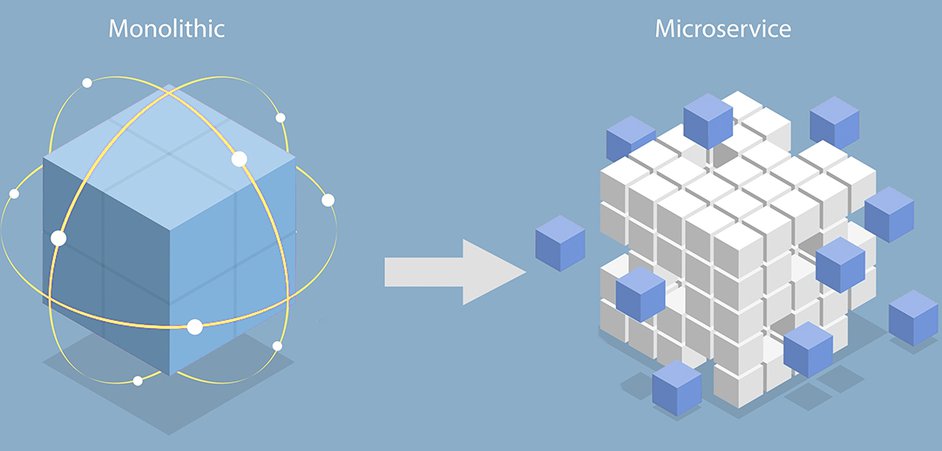
Written by Farah Hamoudah
Farah Hamoudah is a System Analyst under the Pre Sales team and project development division at KUWAITNET. Her interests are rooted in cyber security awareness, citizen development, and youth social advocacy.
The move from monolithic systems to microservices has changed the game in the quick-paced world of technology, where efficiency and agility are critical. At KUWAITNET, we understand that companies must change to remain competitive. This blog will examine the transition from monoliths to microservices, simplifying difficult ideas into manageable stages.
All the parts of a monolithic application—data processing, storage, and actions—live in one enormous codebase, much like in a large, close-knit family. On the other hand, Microservices adopt a more modular strategy, dissecting the program into more manageable, standalone services, each with a predetermined set of functions and data storage.
Offering an alternative to conventional monolithic structures, microservices arose as a paradigm change. It was difficult to demystify the idea and set it apart from service-oriented architecture (SOA). The discussion broadened over time to cover patterns, best practices, and the unavoidable drawbacks of this architectural strategy.
Many projects adopted microservices from the ground up, starting from scratch. Still, despite their potential, several expressed worries about the complexity that microservices brought about. It was said that maintaining end-to-end visibility had become a difficult task, raising concerns about the architecture's management. Some even proposed a return to conventional application servers and traditional monoliths.
The idea that microservices inevitably result in resource savings is a frequent misconception. Decomposing a monolith into microservices doesn't always mean using fewer resources. A larger total resource footprint might result from the duplicated stack, which includes the operating system and server.
It is incorrect to assume that microservices automatically increase the reliability of applications. Even with microservices, there is still a chance for five closely linked services to collapse as a group. It is important to use strategies such as loose coupling mechanisms, circuit breakers, and alternate flows to improve dependability.
Resilience: Using microservices makes your applications more resilient. The ship does not end because of a breakdown in one service. It functions similarly to a safety net for your online business.
Scalability: Can't manage an increase in users? With microservices, you can scale the individual services that need it without growing the monolith as a whole.
Speed to Market: Microservices enable more rapid deployment and development. It takes less time to deliver new features when you can upgrade and distribute services individually.
Simplified Maintenance: In a monolith, fixing a bug or adding a feature might be like finding a needle in a haystack. Microservices simplify maintenance by allowing you to concentrate on the service that requires care.
From monoliths to microservices: At KUWAITNET, the process is just as significant as the final destination. To transition from monoliths to microservices, follow this streamlined eight-step roadmap:
Identify the tasks, activities, and data items that your system carries out.
Can comparable data be combined from several apps?
Arrange the parts you have identified.
Deal with overlaps in functionality and remove duplications.
Verify the kinds, forms, and correctness of the data.
To map relationships between various components, use tools such as SonarGraph-Explorer.
Recognize how the various modules in your codebase work together.
Organize your parts logically so they can be turned into microservices.
Think about the data items and functions that make sense to be separated logically.
Provide a consistent API for services and users to communicate by creating a remote user interface (API).
Verify the API's scalability, backward compatibility, and versioning.
Think of macroservices as a stopgap before microservices. Group the parts into distinct projects and assign them to different deployments.
Draw parts of the monolithic system into macroservices one at a time.
Keep separate data storage for every microservice.
Test your new microservices by integrating them with the monolith.
Ascertain that the configuration of the monolithic system utilizes the new services for data requirements.
Breaking down applications from monoliths to microservices isn't just a tech transformation; it's a strategic move towards a more agile and responsive digital future. At KUWAITNET, we're here to guide you through this journey, ensuring that your applications meet today's needs and are ready for tomorrow's challenges.
Agile, DigitalTransformation, MicroServices, RedHat, app,